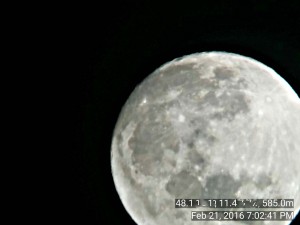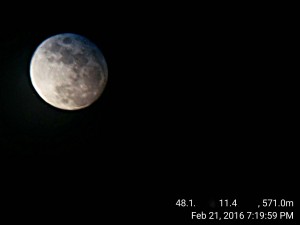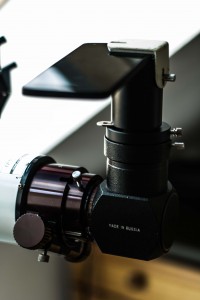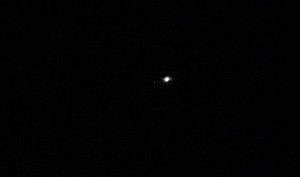
Dont try that at home. Just to fit it temporarily. The mirror is usually nor part of it, used for mechanical support.
Nowadays many love their cell phone with its  built-in camera feature.So my local observatory wants not only offer visitors to view through
built-in camera feature.So my local observatory wants not only offer visitors to view through  our telescope, but give assistance to mobile astronomy?
our telescope, but give assistance to mobile astronomy?
What do they do? I wanted to check out Astrophotography With a Nexus 5 Cell Phone. To make a long story short, since there is little control over the camera paramter, it is actually in the beginning more difficult than using professional equipment.
I know there are some inexpensive adapters are a rigid connection which holds my phone steady to the eyepiece of our telescope or spotting scope. You don’t need anything special. It’s basically a clamp which holds around the eyepiece and a bracket, supporting the phone and aiming the camera lens into the eyepiece. Of course its “afocal imaging.” In other words, one use the telescope an eyepiece is doing the work. One can use any magnification level you like and you focus the image by looking into your camera’s real-time viewfinder. So far so good. A phone has neither a manual focussing and no spot metering. With an app one can at least fix up the aperture.
We can do video, too. Any type of photography that your phone is capable of can be translated through the telescope. Don’t forget your phone’s camera also has adjustments. I used openCamera wich has a nice feature, to lock the sensitivity – with full moon I pointed in my office lamp bevore I took a picture.
What can you expect to see? First off, you’re not going to be able to get a phone to perform like any DSLR or CCD Camera. As exciting as the technology is, photography will be limited to relatively simple subjects, like the Moon, planets, bright stars and the properly-filtered Sun. However, that doesn’t rule out a few brighter deep space objects.
Even at low resolution and a very small size, afocal imaging produces reasonable results. With some focusing practice, photographs of lunar features, the rings of Saturn, the belts of Jupiter, the phases of Venus, bright star clusters and stellar images or possible. With a proper solar filter on the telescope the Sun too. Below you see the Jupiter an 3 of the moons, Calisto is too close.



